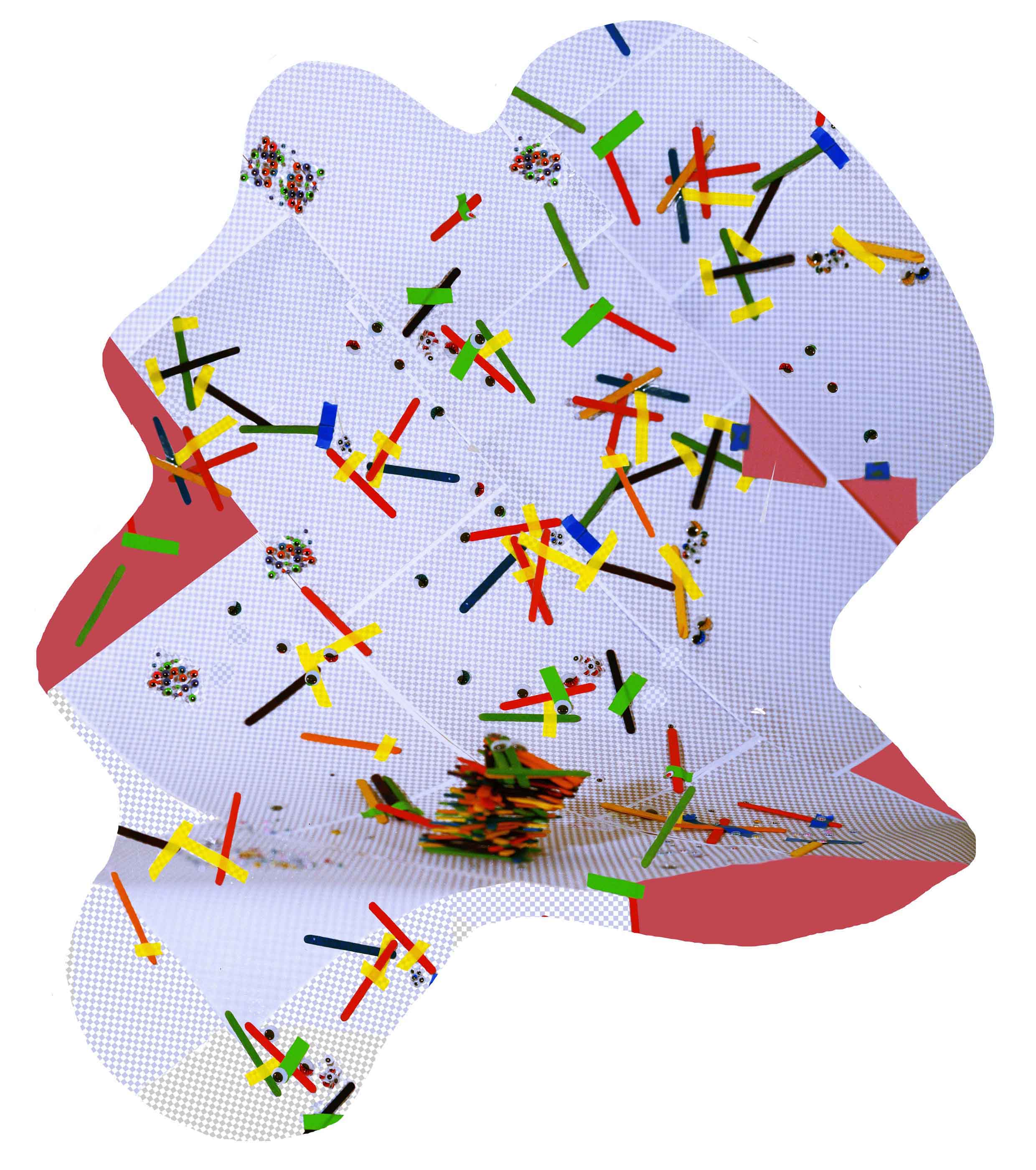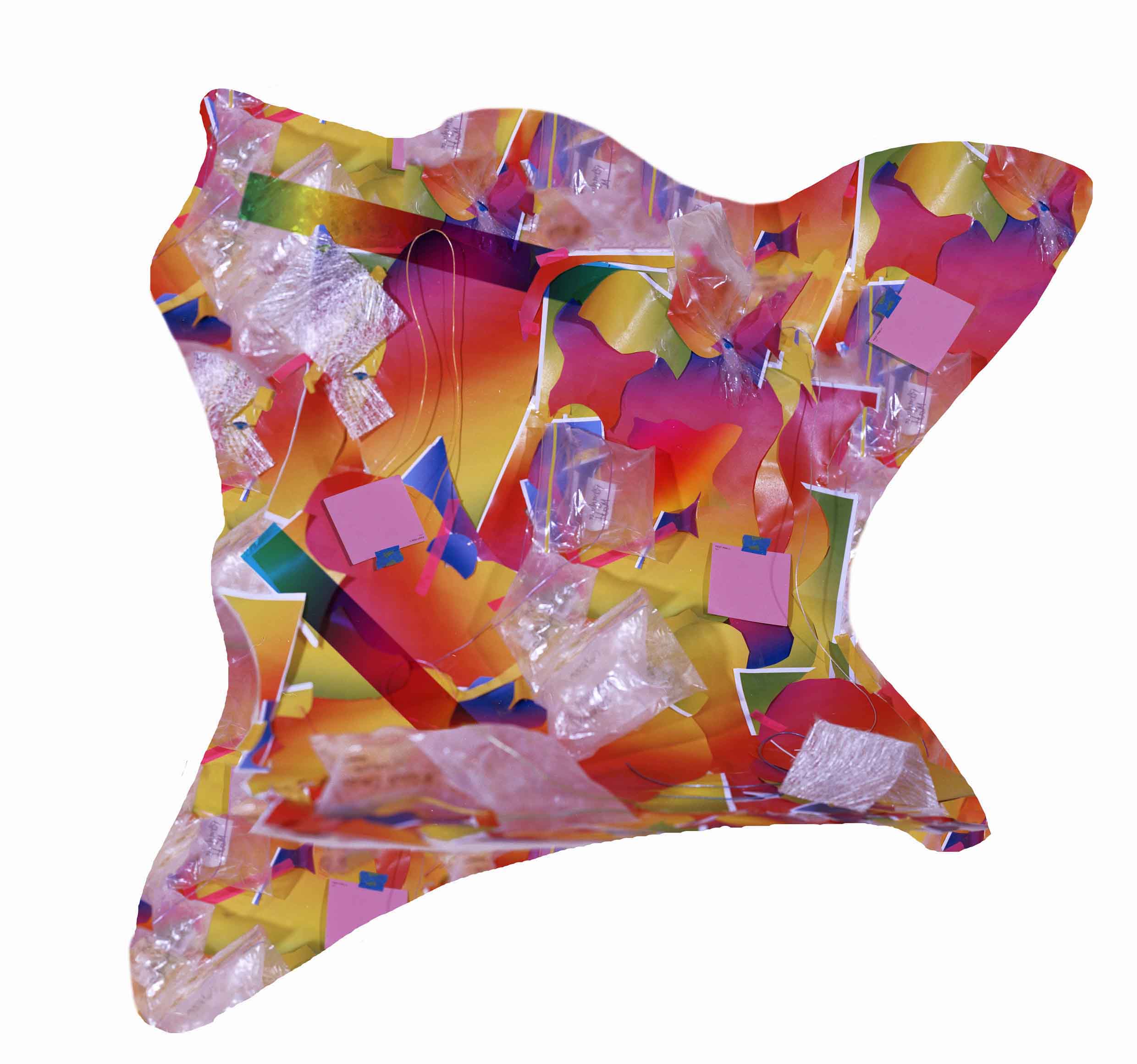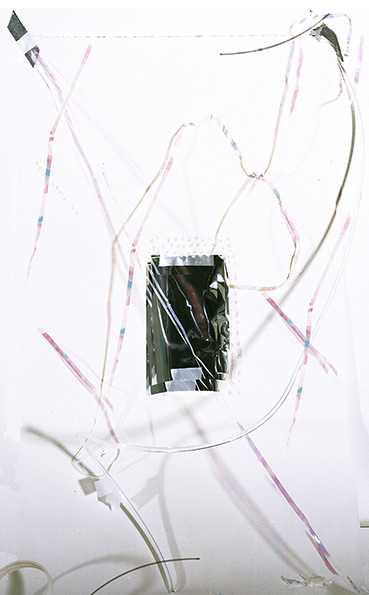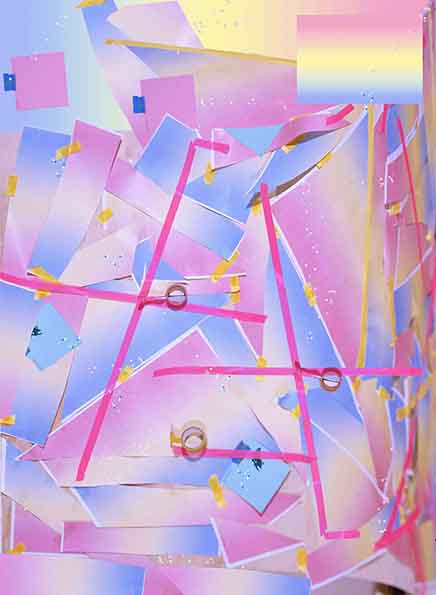Artist profile: Kieran Butler
By Katie Winten
Kieran Butler uses photography to draw parallels between the fluidity in contemporary art and the fluidity in identity. His works are bright, playful, glittery and non-conforming; an expression of himself. We caught up with Kieran to chat about feelings, the influence of art school and the ridiculousness of the plebiscite.

I’m interested in your choice of photography to explore notions of fluidity. You do a lot of experimentation with the photographic medium, using collage, installation and websites as part of your works. Why does photography hold such a strong significance for your practice?
Initially it was the magic of photography that I fell in love with and its inability to accurately represent what it records, it never totally hits the mark for being a ‘truthful’ representation of its subject. From this ‘love at first sight’ moment, as I like to call it, I pursued photography as my major course of study at art school and so my practice finds its foundation in photography. I say foundation because the work I produce I wouldn’t strictly call photographs. While my works are typically printed or screen based images, the frame around them is equally as important and makes the work a simultaneous image-object. I think of the frame as a holistic part of the work and less of a housing or ornament for the image. My works are not concretely one or the other, rather I think of photography as fluid like an amorphous blob. Essentially photography is significant to my practice because of its materiality. It’s inherent fluid/amorphous qualities run many parallels to notions surrounding identity politics and how social, cultural and political contexts are always changing.

Your work definitely mirrors your style and personal aesthetic! Is making art cathartic for you? How does art-making influence your identity politics?
I guess in a way I find art making cathartic. On a really basic level the process allows me to better understand what it is that I’m interested in and what I do and don’t like; I say very ambiguously ?. I’m not sure I would say that my art making influences my identity politics, rather it’s a way for me to work through understanding my context as an artist and on a personal level. I wouldn’t say that I necessarily subscribe to the politics of one particular group, I tend to identify with small multiple bits and pieces of many groups, not holistically just one. Which just further iterates my earlier point about photography being more than one thing at the same time. I want to be everything all at once and so does my work!

The titles of your works are very tongue-in-cheek; ‘Fun Sticks’, ‘Tosser’, and ‘Yeah I’m Confused Too’. Do you think the art world sometimes takes itself a bit too seriously?
100% I think the art world often takes itself too seriously! For myself I think this feeling is a residual effect from art school, an environment where I would say at least 90% of the time you’re encouraged to make work to a standard, rigid, academic and critical framework – which is something I became really tired of. I also think that by being too serious artists can block off entry points to their work, making it inaccessible to someone who’s not educated in art. By being a little silly and tongue-in-cheek I think artists can open more entry points to their work. This, for me at least, makes a work more successful. That said I’m not at all saying work can’t be serious, everything has its time and place.

Your work isn’t expressly about your identity, but we’ve spoken before about how you’re starting to incorporate your personal voice into your work more. Can you tell me a bit about your most recent work, ‘Feelings Matter’?
Feelings Matter is an ongoing work that grew out of poems I would write as a way of dealing with my emotions, mostly as a cathartic process. A beginning to putting my personal voice into my work more. I was also interested in experimenting with text based work and online formats of production, as I hadn’t previously done so.
The poems are about relationships and interactions I’ve had with other people and how they’ve made me feel. This also links back to my experience of the art world sometimes taking itself too seriously. It’s one of my attempts at not taking myself too seriously and making work about emotions; something, at least in my experience, not always present at art school or an academic context.
In terms of my identity, the process of catharsis involved in writing the work has helped me to better understand the politics of identifying as queer. Maybe it’s part of a really slow ‘coming out’ for want of a better phrase, an experience I’ve never really wanted or explicitly had; hopefully not too many readers shudder at that, haha!

Thanks so much for contributing a tote bag for our upcoming fundraiser, Totes Gay! (Where we’ll be auctioning off customised tote bags from local artists and designers to raise funds for marriage equality). What are your thoughts on the plebiscite/marriage equality?
Firstly I think the plebiscite is pointless, a waste of tax payer money and our government is wasting their time on this issue when there are more dire issues that need to be addressed such as: environmental sustainability, improving our human rights and ethics standards and improving our economy. If the Australian government would just enact marriage equality then it would be over and done with. People probably wouldn’t think twice about two people who love each other getting married, and our government would be able to move on. The LGBTQI+ community would have exactly the same rights as heterosexual Australia, so I don’t see why it’s such a big deal! Plus If you look at stats from the Australian Bureau of statistics and research companies such as Crosby/Textor, 7/10 Australians surveyed support marriage equality, a rate higher thean many other nations already enacting marriage equality. Marriage equality is so important and the pros definitely out weigh the negatives by a mile! It just makes sense to say yes and stop being a backwards nation.

